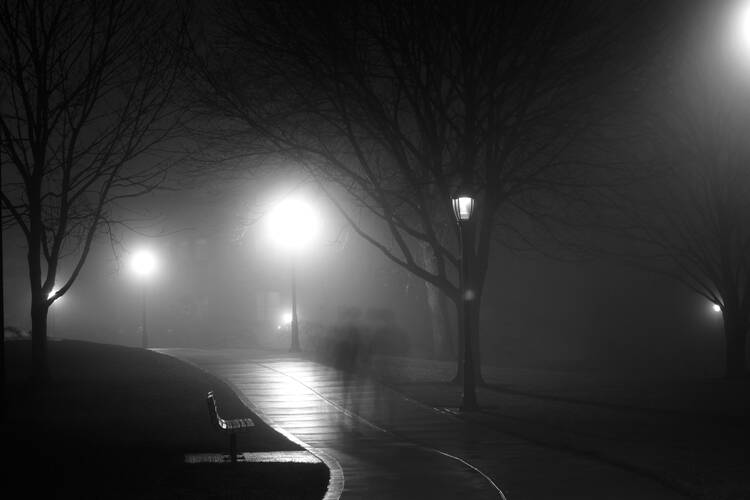A Reflection for Thursday in the Octave of Easter
Find today’s reading here.
“Why are you troubled?
And why do questions arise in your hearts?
Look at my hands and my feet, that it is I myself.
Touch me and see, because a ghost does not have flesh and bones
as you can see I have.”
Popular culture is obsessed with ghosts. There are malicious ghosts. There are friendly ghosts. There are wise ghosts. There are even funny ghosts.
Whatever it is about them, it’s hard for our collective imagination to not wonder about the possibility of the existence of those who linger after death, roaming the world with purpose or without, not quite ready for the afterlife.
Official church teaching on ghosts is ambiguous, but this passage from the Gospel of Luke is not.
After dying on the cross, Jesus reveals himself to his disciples—but not in the form of a specter or an apparition. He emerges in his corporeal, earthly form, even after his death was witnessed by many people.
I’m not sure about you, but I’m positive that like the disciples, I would be absolutely terrified if someone I had seen die returned to me in the flesh, even if they greeted me by saying “Peace be with you.”
Make no mistake about it: The risen Christ was not a ghost.
But we’ll never be visited by the full, bodily presence of a loved one or close friend who has died, unlike how Jesus appeared to his disciples. It therefore begs the question—if we won’t ever have a concrete, overt visitation from the deceased like this, can we truly, strongly feel the presence of those who have left us?
When my grandfather started the process of passing on, he told my dad that he began seeing crows frequently. He said his already deceased cousin, Eddie, began to visit him in the form of a crow, giving him preparation to join his relatives that had already died.
Crows have long been considered to be symbolic of death—both imminent death and deaths that have happened in the past. Their striking black feathers are a natural association with the color most synonymous with dying.
Crows are also highly intelligent birds; another reminder of my grandfather, who was a proud, Irish Catholic graduate of the University of Notre Dame and Stanford Medical School.
I never knew him well. Since he passed away when I was a small child living in New York while he was still in California, I don’t remember much about my relationship with him.
But whenever I see a crow, it helps me to imagine what he was like; a brilliant man who helped raise my father into this man he is.
My grandmother Peggy passed away on Feb. 22 of this year. Much like my dynamic with Grandpa Jack, I did not get to form much of a relationship with Peggy because of our geographical limitations and the advanced dementia that she fell victim to late in her life.
I’ve often seen pairs of crows together—I’ve interpreted them to be Jack and my dad’s late brother Robert—but now if I see a trio of them, I’ll know exactly who they are.
Even if I never became well acquainted with my grandparents while they were alive, Jesus shows us that spiritual presences can transcend death.
One of the great songwriters of our time, Phil Elverum of Mount Eerie, composed a painfully beautiful album about the death of his wife Geneviève Castrée, and titled it “A Crow Looked at Me.”
The final track from that album, simply titled “Crow,” contains lyrics about a hike Elverum went on with Castrée on a cold November day before she passed: “All the usual birds were gone or freezing/It was all silent, except the sound of one crow/Following us as we wove through the cedar grove.”
The image of a crow is both morose and hopeful to me. Sometimes when I see one or hear one’s caws, I shudder at the thought that death could be imminent.
But most of the time, I internalize it as the image of Jesus saying “Peace be with you” to his disciples; it’s Jack, Peggy or Robert, letting me know they’re over me, somewhere between this world and heaven.








